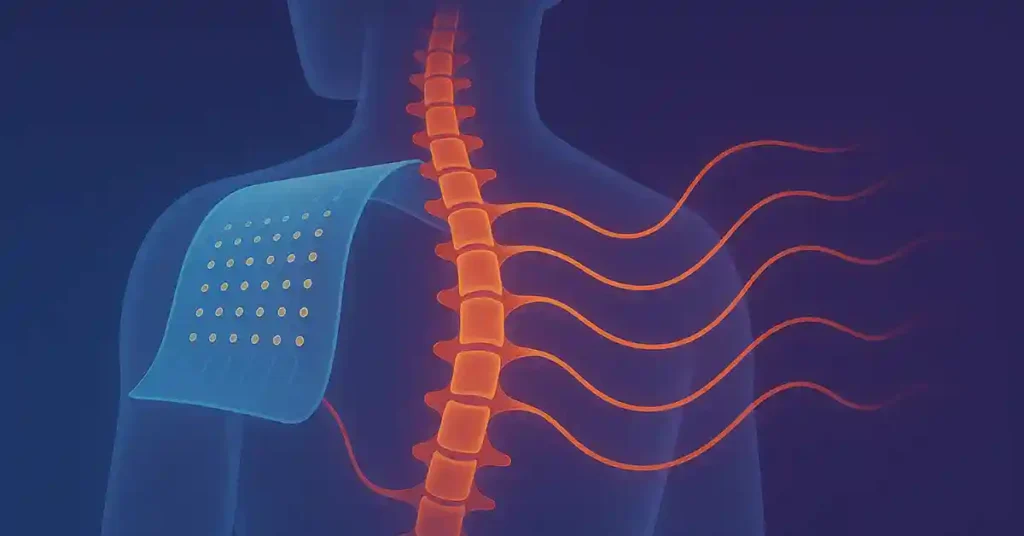Have you ever wished the clunky cap and sticky gel of a standard EEG would simply vanish? I have—and scientists at Penn State heard us. They 3‑D‑printed an electrode so slim and flexible it looks like a single human hair, yet it sticks to your scalp and records crisp brain waves for more than a day without irritating gel or bulky wires.
How Does a “Hair” Become an Electrode?
Think of the device as a micro‑lollipop:
Dot‑sized tip — the actual sensor that collects electrical signals.
Hair‑like tail — a stretchable “wire” that snakes back to the recorder.
Bio‑adhesive coating — a printable glue that keeps everything in place even if you run a marathon (or just run a comb through your hair).
Because it hugs the scalp so closely, electrical resistance stays low, meaning the signal you see on‑screen truly reflects brain activity instead of background crackle.
The Silent Guardian
A vow of silence. A mission across centuries. One assassin holds the fate of humanity in his hands.
Adam never chose to be silent; the Phylax demanded it. Trained from childhood as a time-traveling enforcer, he slips through centuries to eliminate those who threaten the future. His latest mission: assassinate Emperor Qin Shi Huang before a ruthless plot ultimately destroys humankind.
Why That Matters
Traditional metal electrodes can slip, dry out, or tug uncomfortably on skin. Poor contact equals fuzzy data, and re‑gelling every few hours is no fun for patients or technicians. A stick‑and‑stay fiber changes the game for:
Sleep studies—monitor all night without waking the sleeper.
Seizure tracking—record over days at home instead of hours in hospital.
Consumer wearables—imagine a fitness band for your brain waves.
Beyond Hair-Thin: Other Cutting-Edge Brain Monitoring Technologies
While hair-thin electrodes are turning heads, other groundbreaking innovations are also redefining how we track brain and nerve activity:
1. Graphene Sheet Implants
These ultra-thin implants are made of transparent graphene and are even thinner than a strand of hair. Each sheet contains 48 electrodes that can be placed directly on the brain’s surface. Because graphene is both strong and nearly invisible to light, it allows researchers to both record and potentially stimulate the brain without interference. Early human safety trials began in the UK in 2024, marking a major step toward real-world use in treating conditions like epilepsy and Parkinson’s.
2. Coaxial Micro-Probes
These are incredibly small—just 8 to 14 micrometers in diameter (that’s about one-fifth the width of a human hair). What makes them special is their dual functionality: they can conduct electricity and deliver light. This is particularly useful for optogenetics, a field where scientists control brain cells using light. So far, these micro-probes have been tested in mice, and researchers are preparing for spinal cord tests next.
3. Wraparound Spinal Implants
Unlike most implants that poke or press, this design wraps gently around the spinal cord. The flexible sleeve captures nerve signals in 360 degrees and can even send signals back to muscles. That could help restore movement in people with paralysis—without the need for brain surgery. These implants have shown promise in rats and cadavers, and researchers are currently proposing human trials.
Where Could This Take Us?
Invisible medical monitors — long‑term EEG patches hidden under hair or hats.
Brain‑computer interfaces (BCIs) — high‑density, flexible arrays that translate thoughts into text or movement with less scar tissue than rigid metal pins.
Rehab & neuro‑prosthetics — wraparound implants that bridge spinal‑cord injuries, letting the brain talk to limbs again.
Everyday wellness — consumer headbands that watch stress, focus, or sleep quality as effortlessly as smartwatches count steps.

Hurdles on the Horizon
Wireless power & data — today’s fiber still needs a cable; mini‑batteries or inductive links must shrink too.
Mass production — printing micro‑adhesive fibers at scale (and in hair‑matching colors) requires new manufacturing tricks.
Privacy & ethics — if brain data becomes as easy to stream as heart‑rate, who owns the feed? Secure encryption and clear consent will be vital.
Regulatory paths — flexible implants blur lines between wearable, medical device, and implant. Agencies are catching up.
The Take‑Home Strand
From scalp‑friendly fibers to graphene lace and spinal sleeves, hair‑thin brain monitoring technology is shrinking the gap—literally—between electronics and our nervous system. The result could be kinder diagnostics, smarter therapies, and maybe one day a headset that knows you need a break before you do. For now, keep an eye on your hair… it might be hiding the next big leap in neuroscience!






